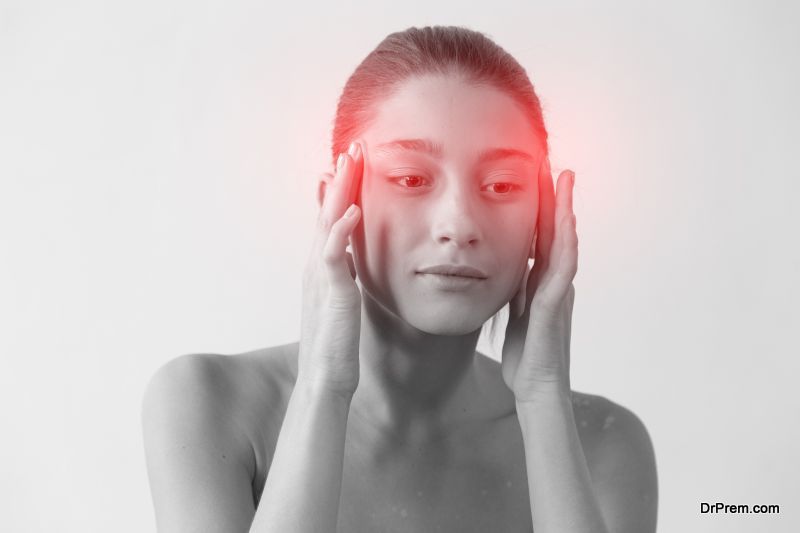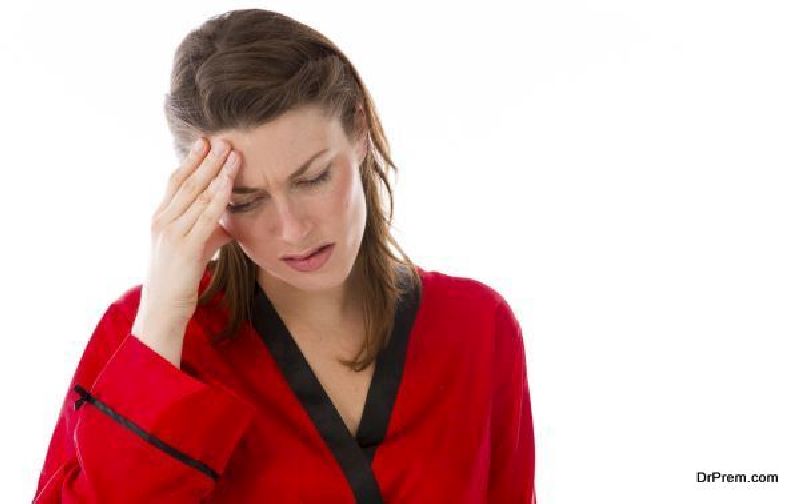Headaches can be crippling, especially when accompanied by nausea, fatigue, sensitivity to light, and dizziness. But not all headaches are created equal.
Some occur more often than others and not all can be treated with medication. Certain types of headaches are triggered by outside variables, while others attack without warning.
Here we’ll examine the five most common types of headache, how to identify them and how you can find relief at home.
Tension Headache
Probably the most common headache type on our list, tension headaches plague sufferers with a constant feeling of pressure. This is felt primarily in back of the head or neck and in the temples. The cause of a tension headache can vary, but the common denominator is muscle contractions in the neck and head. Catalysts can include:
- Stress
- Certain foods
- Activities
- Extended periods of driving
- Long hours on a computer
The pain level of a tension headache can be categorized as moderate, which means they don’t often impact daily activities. Most people can go about their business while experiencing a tension headache. This is due in part to the fact that there’s no change in pain level when a person bends over or exerts themselves.
Most tension headaches can be successfully treated with over the counter medication.
Cluster Headache
If you’ve never suffered from a cluster headache, consider yourself lucky. Cluster headaches are not very common, but when they do hit they are extremely painful.
Sufferers experience intense pain accompanied by a burning feeling. This pain is constant and throbbing. When someone is suffering from a cluster headache they often can’t sit still. Patients stay active during attacks to distract themselves from the discomfort.
Pain is located behind the eye, usually one or the other, and does not change sides. Because there is no known cause for cluster headaches, there is no cure. Sufferers often find their own methods for dealing with the intense discomfort.
You may be wondering why these types of headaches are known as “cluster” headaches. It’s because they often come in a cluster or group, occurring two or three times a day during a given cycle. The cycle of a cluster headache can last for weeks to months. Patients sometimes get false hope when cluster headaches enter “remission” for a few months only to return.
Because there is no known cure for these types of headaches, treatment options are somewhat unconventional. Patients can use oxygen or receive a shot of sumatriptan (Imitrex). Prescription medications in the form of nasal spray may also be used.
Migraine Headache

A migraine is an extremely common form of a headache. Most people misdiagnose their headaches as a migraine or don’t realize that what they’re experiencing is more serious than a tension headache. Some of the most common symptoms that accompany migraines are:
- Impaired or blurred vision
- Sensitivity to light
- Nausea and vomiting
- Sensitivity to sound
- Irritability
- Nasal congestion
Another headache without a known cause, migraines are difficult to prevent. Though it has been determined that migraines are related to a change in the body’s blood vessels and nerves, as well as abnormalities in a person’s brain. It has also been suggested that the size of a patient’s brain can actually determine the onset of migraines.
The pain of a migraine headache is often described as throbbing or pounding and considered moderate to severe. This can fluctuate greatly from one individual to the next. For some, a migraine lasts only a few hours while others can suffer for days.
Both prescription and over the counter medications can offer some relief for migraine pain, but there are other at-home remedies that have proven successful. These include drinking grape juice or eating nuts, both of which possess pain relief agents. Applying pressure and massaging your temples might also give relief. You can also try applying either a cold or warm compress. If your migraine is triggered by light or sound, you can try resting quietly in a dimly lit room.
Sinus Headache
The only headache on the list that is associated with a diagnosed infection is the sinus headache. When a patient’s sinuses become inflamed, it causes pain, pressure, and discomfort, most often near the bridge of the nose and the forehead area. This pain intensifies when a person leans over or bends down, sending a rush of blood and pressure to the head.
Another sign that your headache needs a prescription antibiotic is when it’s accompanied by a fever. This is another indication that your headache is related to an infection. It’s suggested you see a medical professional to receive proper antibiotics, but there are other things you can do for relief.
Using a humidifier or vaporizer that delivers moist air can help. Dry air can irritate your sinuses further. Saline nasal spray or a steroid spray will help moisten the nasal cavity. This can also be done by injecting a saltwater solution into your nose. Other medications include decongestants and pain medications.
During a sinus attack, avoid any type of outside irritants and strong odors. These can include but are not limited to cigarette smoke or perfume.
Rebound Headaches

Perhaps the only type of headache on the list that has a clear cause is the rebound headache. Treating any of the above headaches with over the counter medications can offer temporary relief. But patients must be careful not to overmedicate. Overuse of these types of medications can actually cause a rebound headache!
The question remains: “How can a medication that is meant to treat headaches actually cause them?” People share different theories on this, but the two most common beliefs are that overuse of acetaminophen or aspirin can actually shift the brain from a state of relaxation to one of excitement or that rebound headaches are brought on by the body’s withdrawal from the constant dosage of chemicals.
To avoid rebound headaches be sure to follow the correct dosage and frequency of the medication bottle. If you find that you’re taking the medication for more than three days in a row, contact a medical professional. It’s also suggested you avoid medications containing opioids, as they can become addictive.
Correctly Identify and Treat a Headache
Now that you have a better understanding of the most common types of headaches, including symptoms, you can better diagnose your condition. If any headache persists for a long period of time and interferes with your daily activities, it’s suggested you contact a professional.
Headaches are difficult to avoid, especially against everyday stresses like work, finances, and other obligations. But a mild stress headache is different from those mentioned above. Try some of these at-home remedies but be realistic about their benefits and always take the necessary precautions when dealing with your health and medication intake.
Article Submitted By Community Writer





